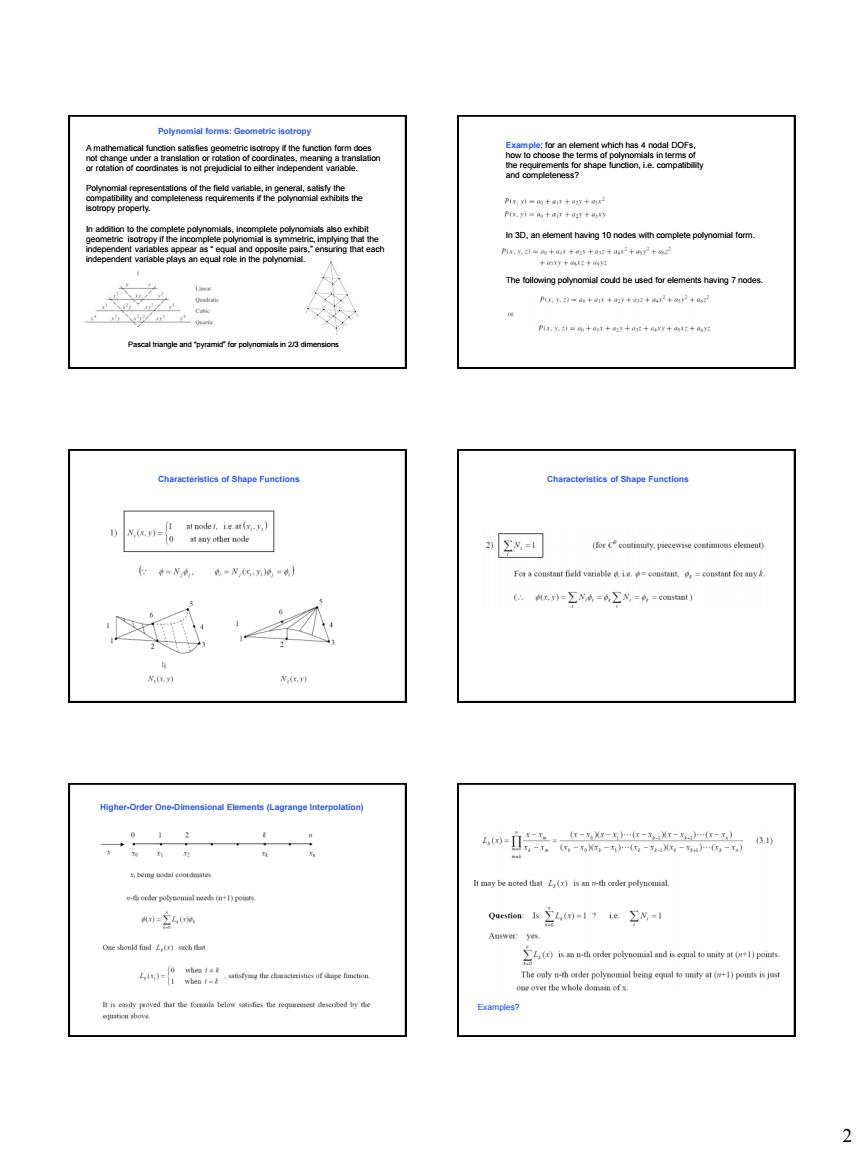正在加载图片...

alceoddbeastoramenshahg7noder a-儿k Σx 长-N,4-N化的-) Higher-Order One-Dimmensional Elements (Lagrange Interpolation ) ybe马(gn由p内am -0 ,( 2 2 Polynomial forms: Geometric isotropy A mathematical function satisfies geometric isotropy if the function form does not change under a translation or rotation of coordinates, meaning a translation or rotation of coordinates is not prejudicial to either independent variable. Polynomial representations of the field variable, in general, satisfy the compatibility and completeness requirements if the polynomial exhibits the isotropy property. In addition to the complete polynomials, incomplete polynomials also exhibit geometric isotropy if the incomplete polynomial is symmetric, implying that the independent variables appear as “ equal and opposite pairs,” ensuring that each independent variable plays an equal role in the polynomial. Pascal triangle and “pyramid” for polynomials in 2/3 dimensions Example: for an element which has 4 nodal DOFs, how to choose the terms of polynomials in terms of the requirements for shape function, i.e. compatibility and completeness? In 3D, an element having 10 nodes with complete polynomial form. The following polynomial could be used for elements having 7 nodes. Characteristics of Shape Functions Characteristics of Shape Functions Higher-Order One-Dimensional Elements (Lagrange Interpolation) Examples?